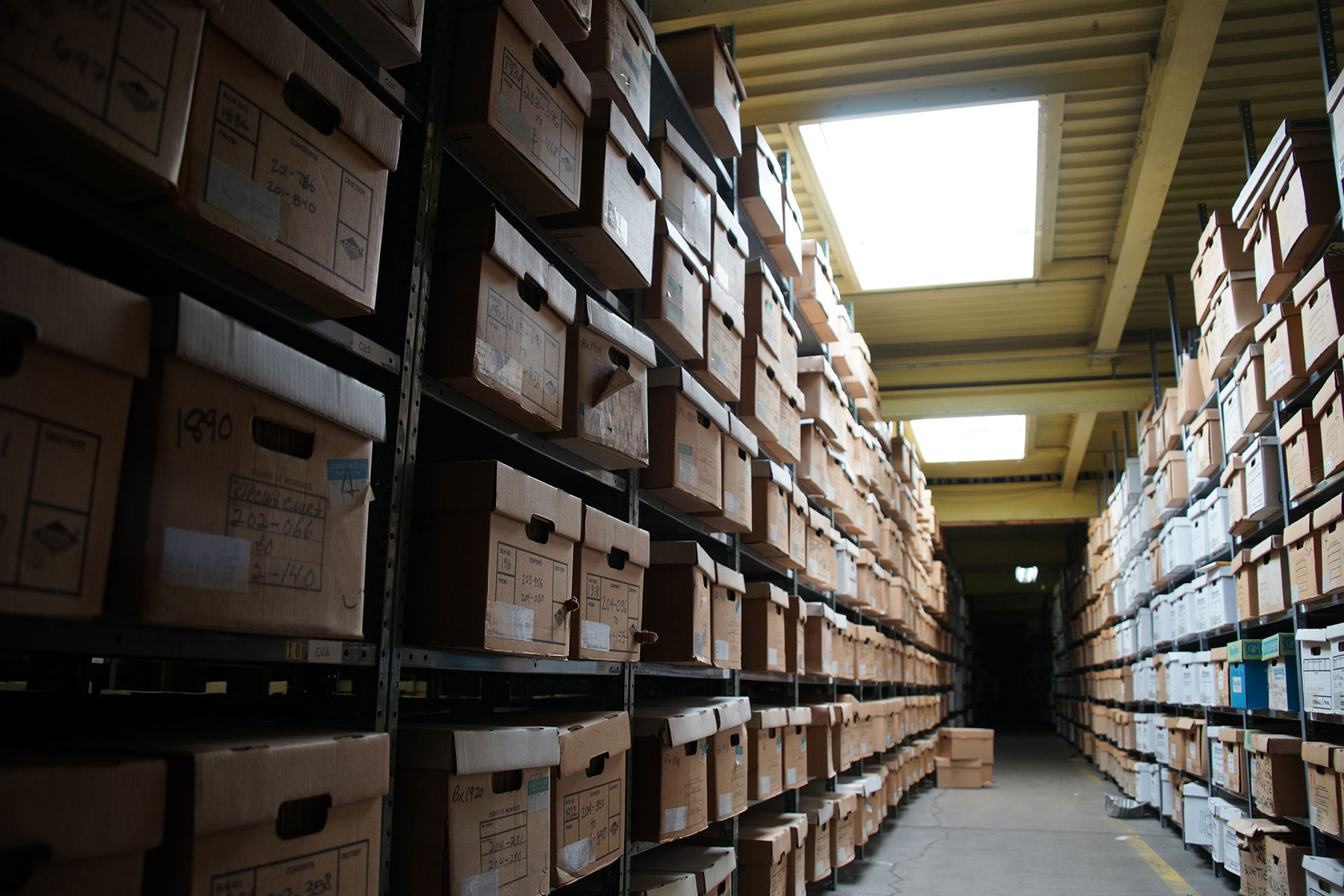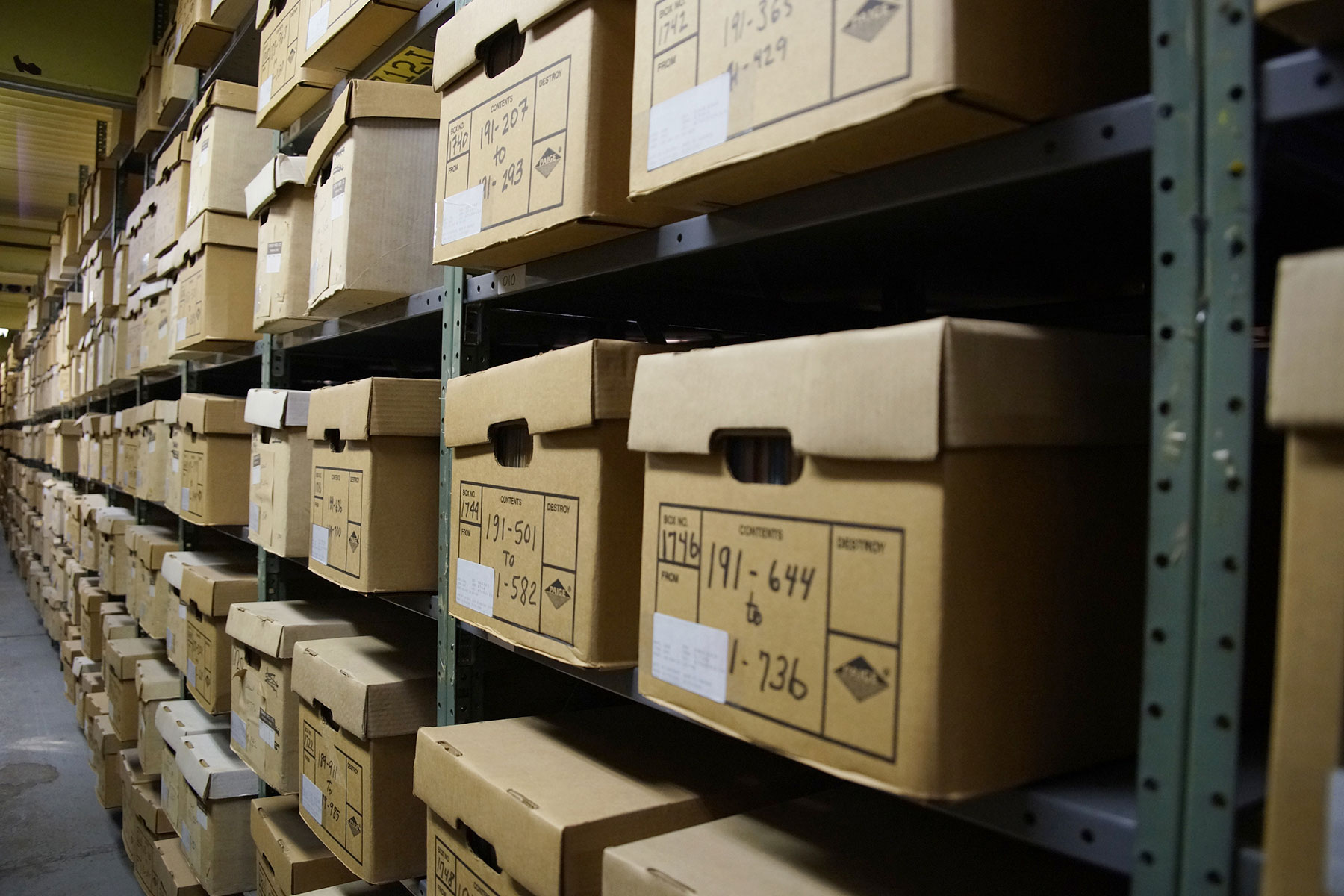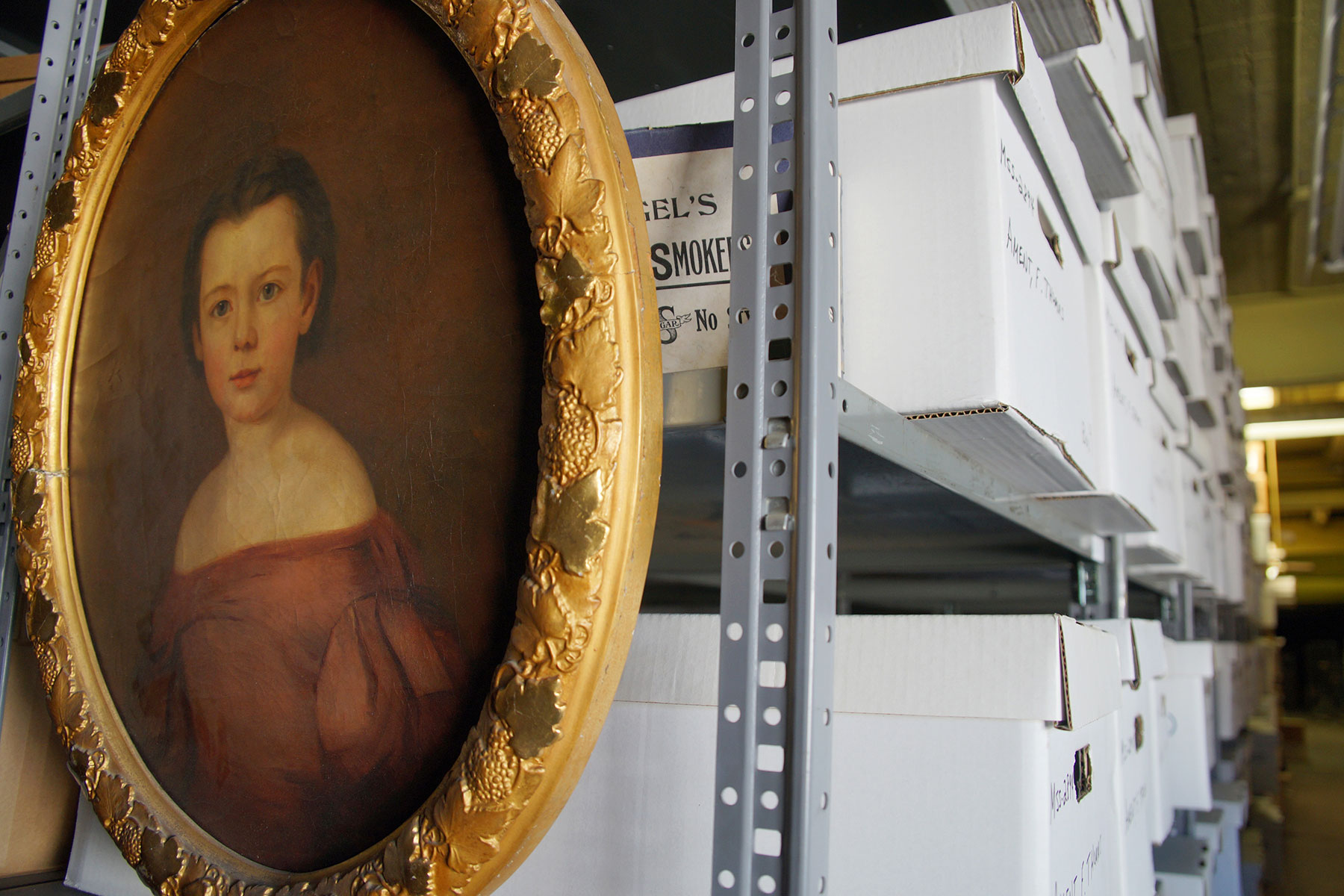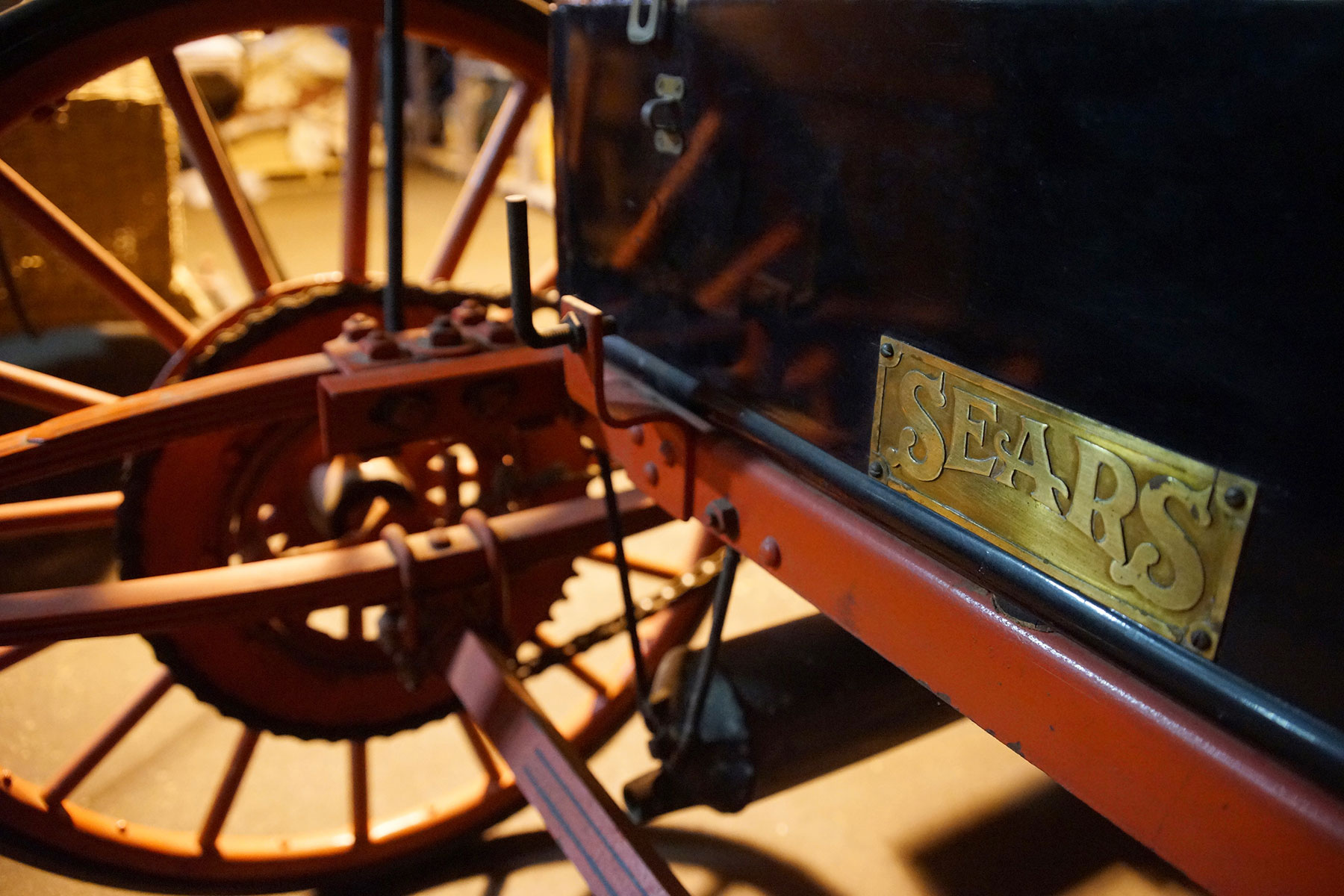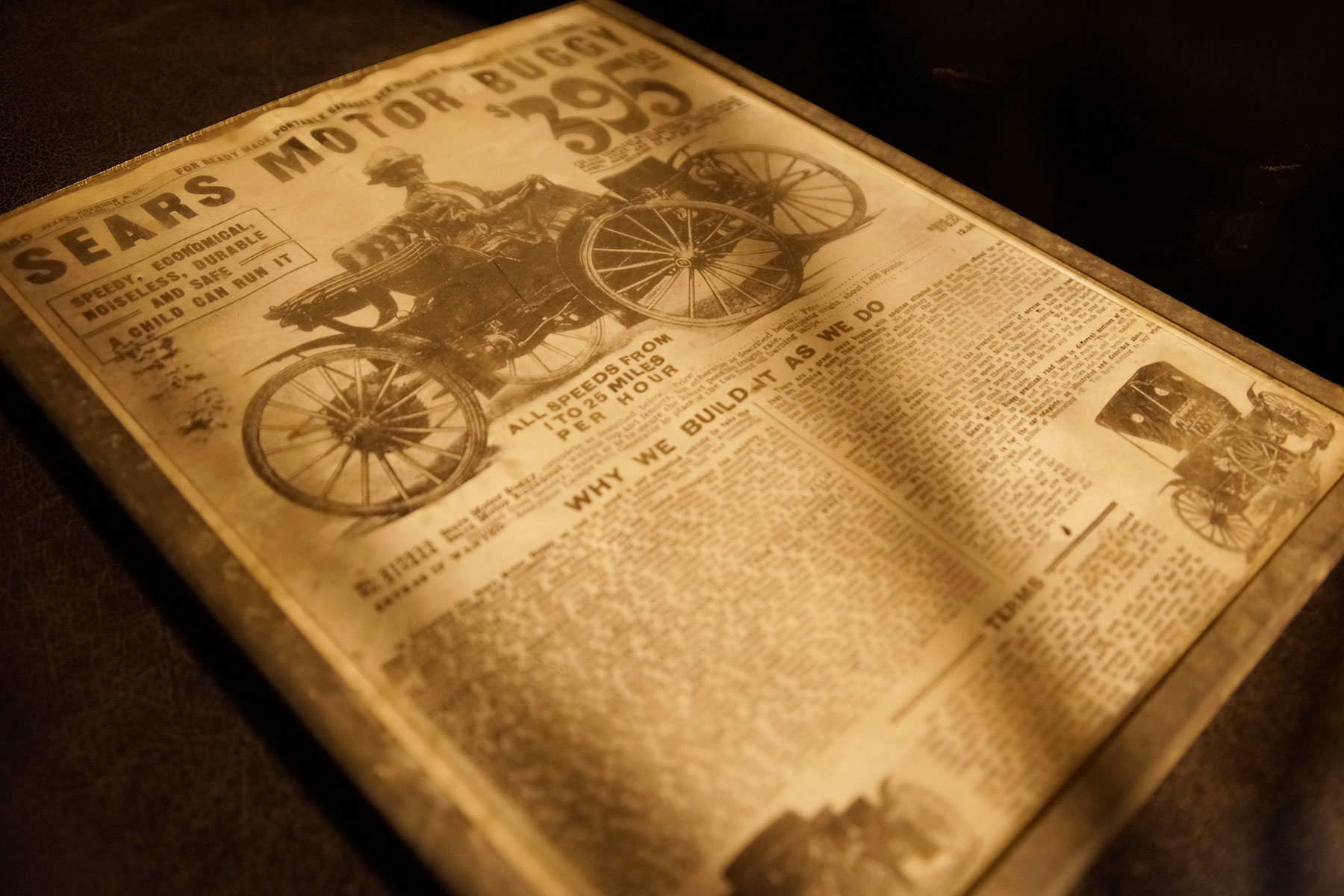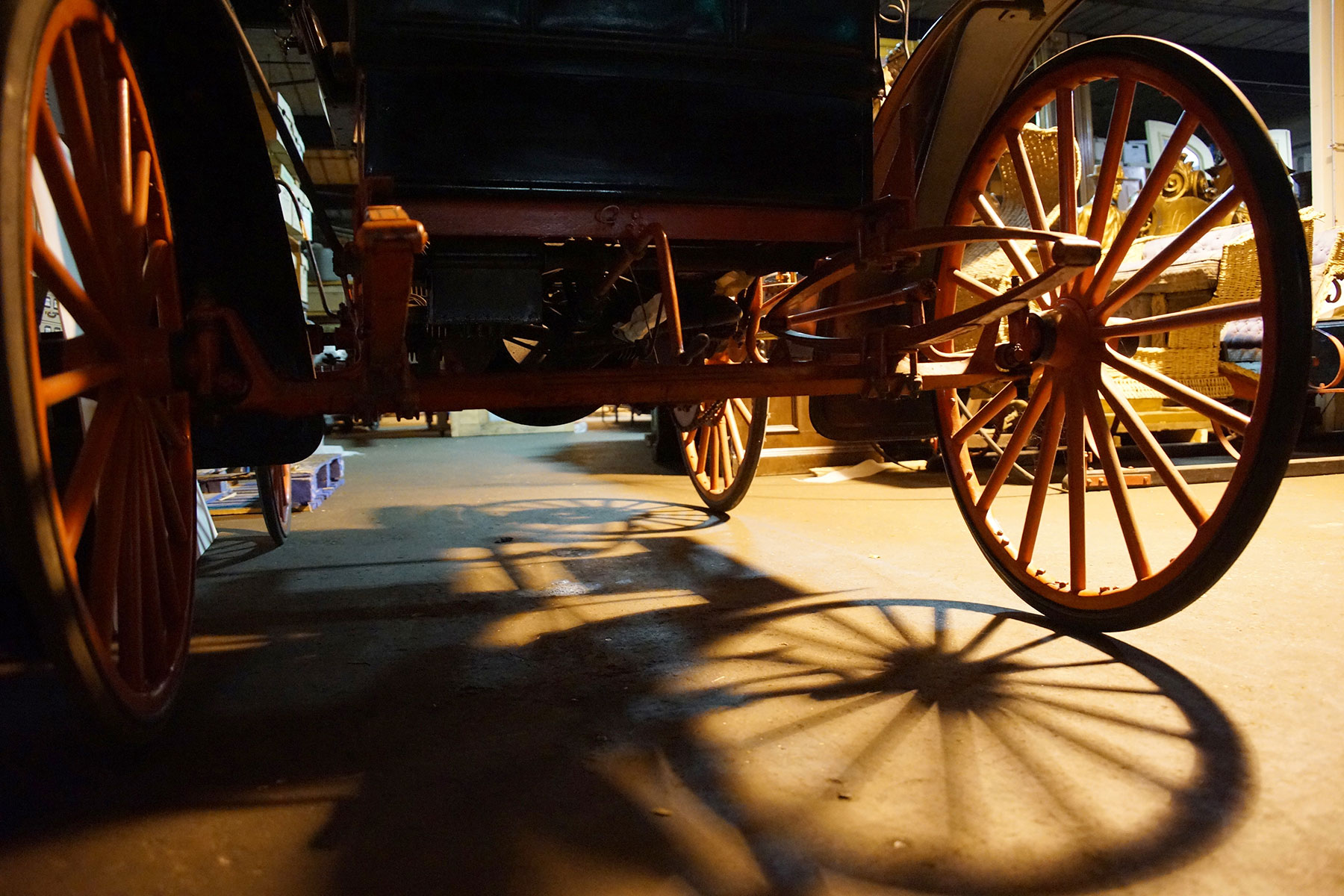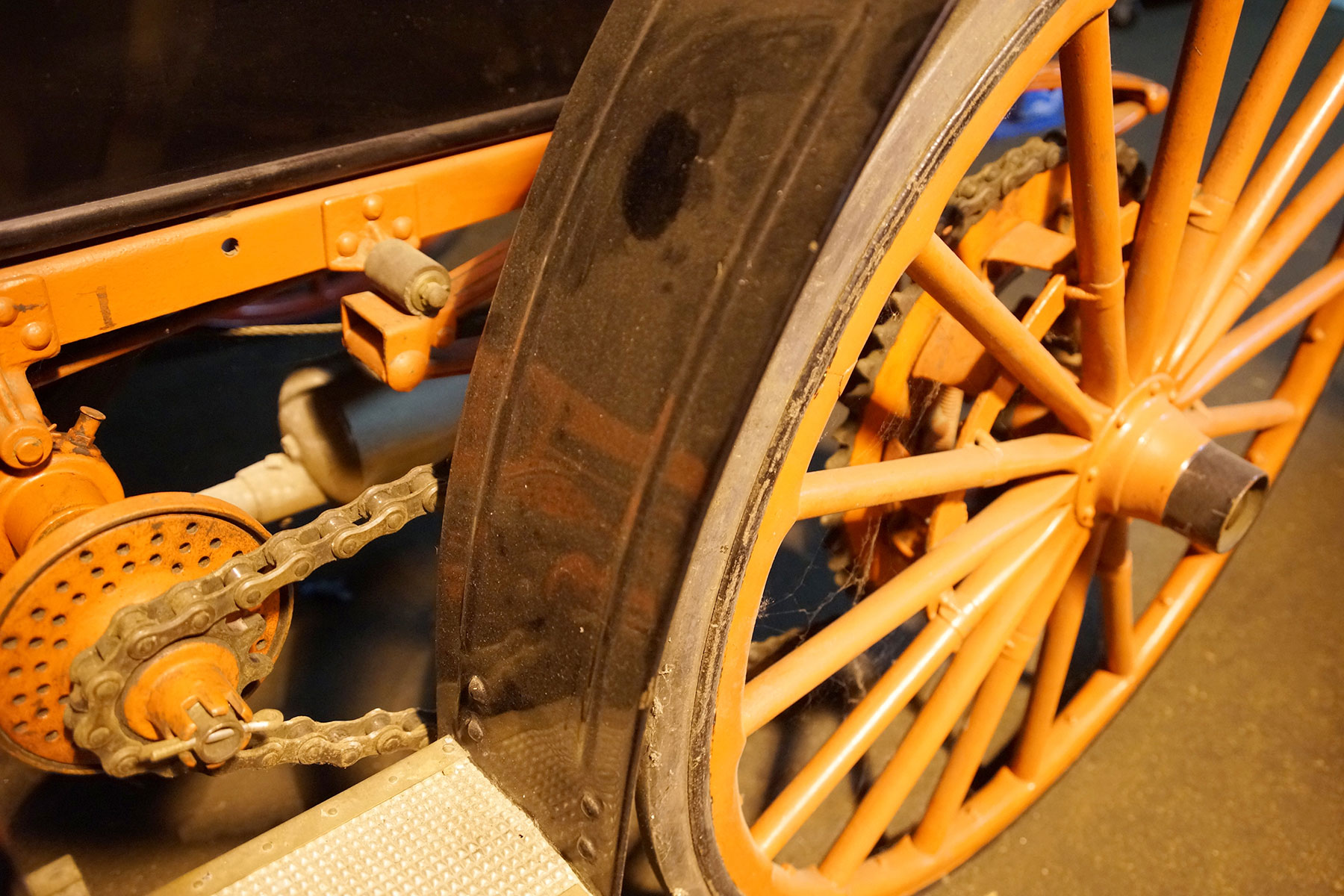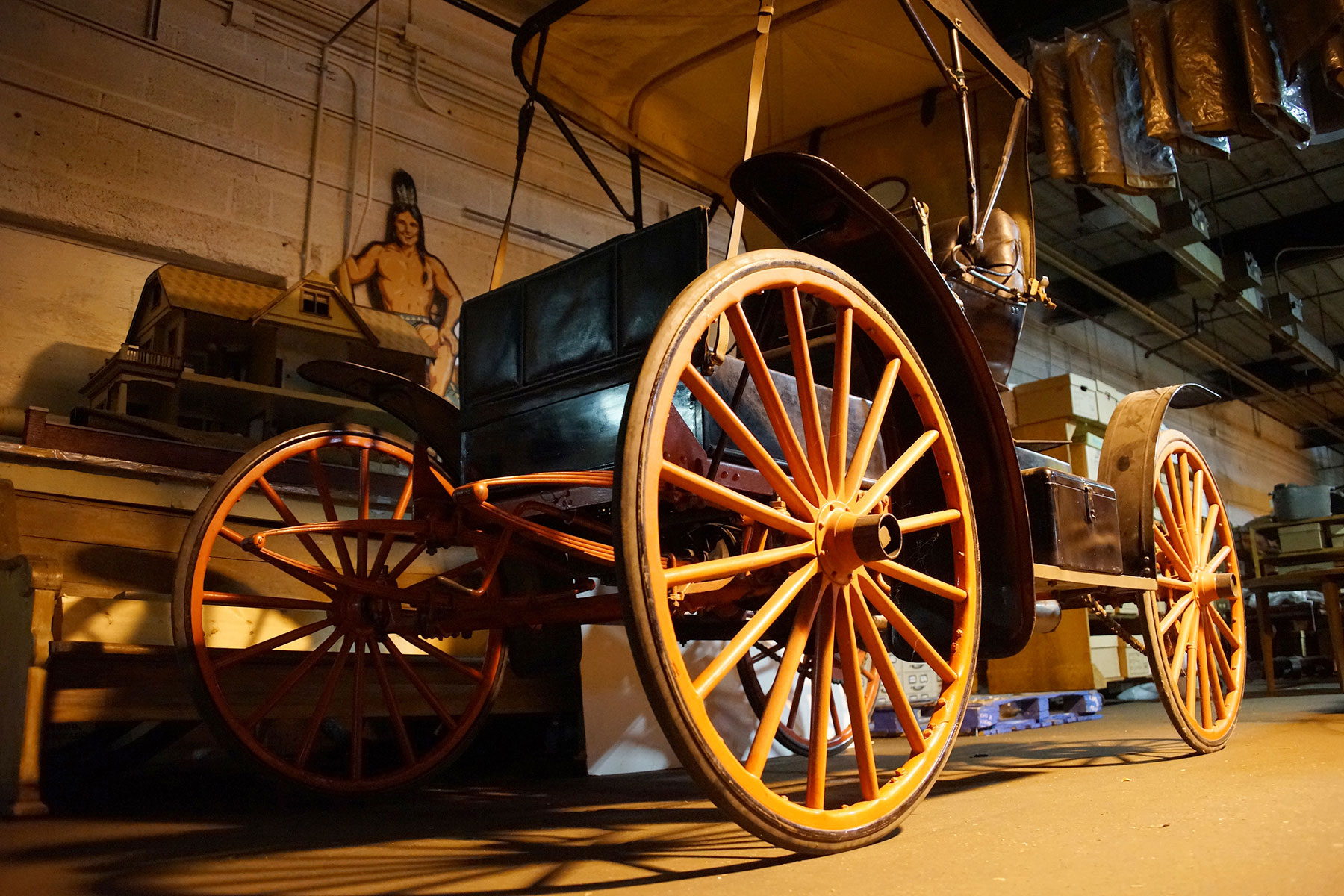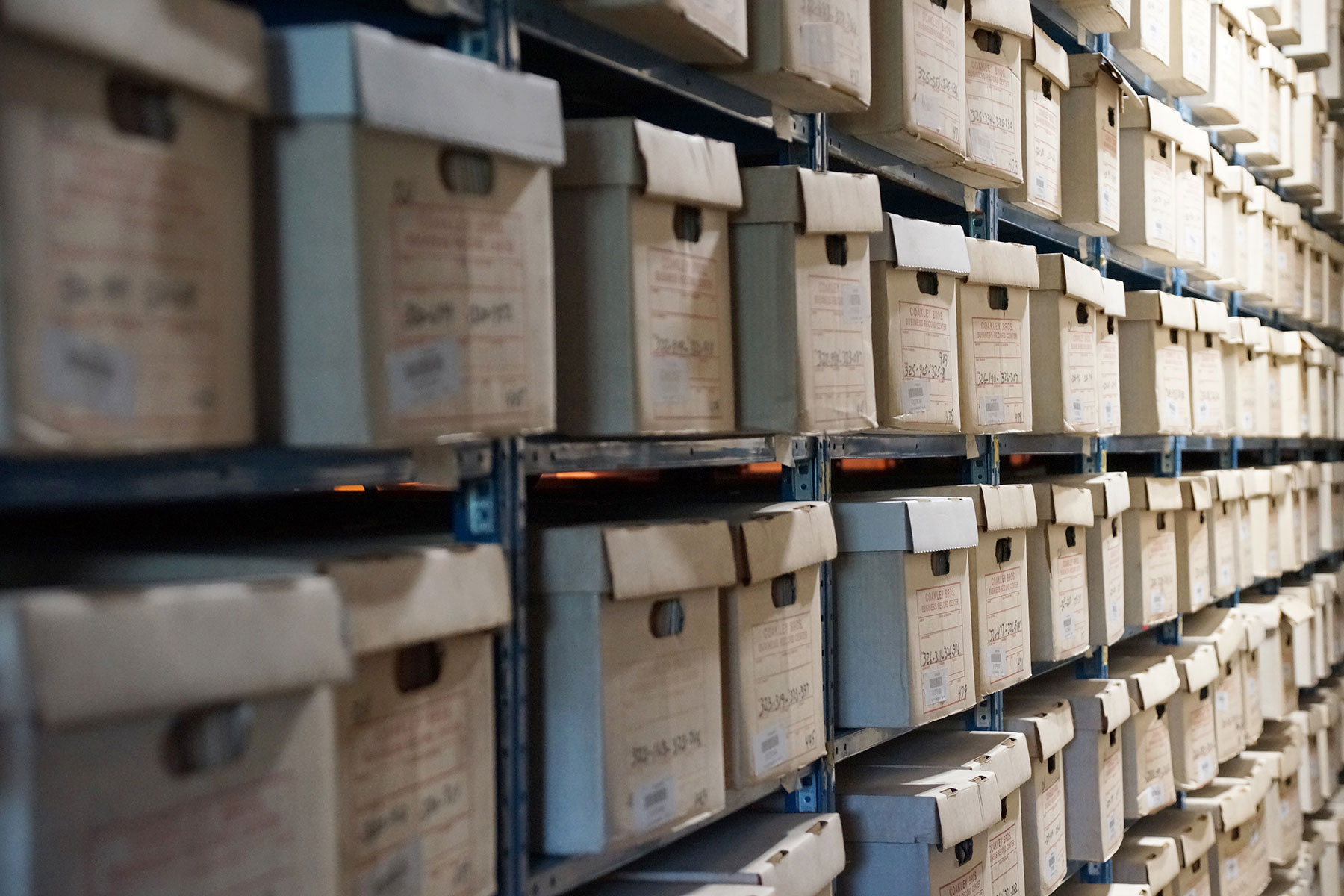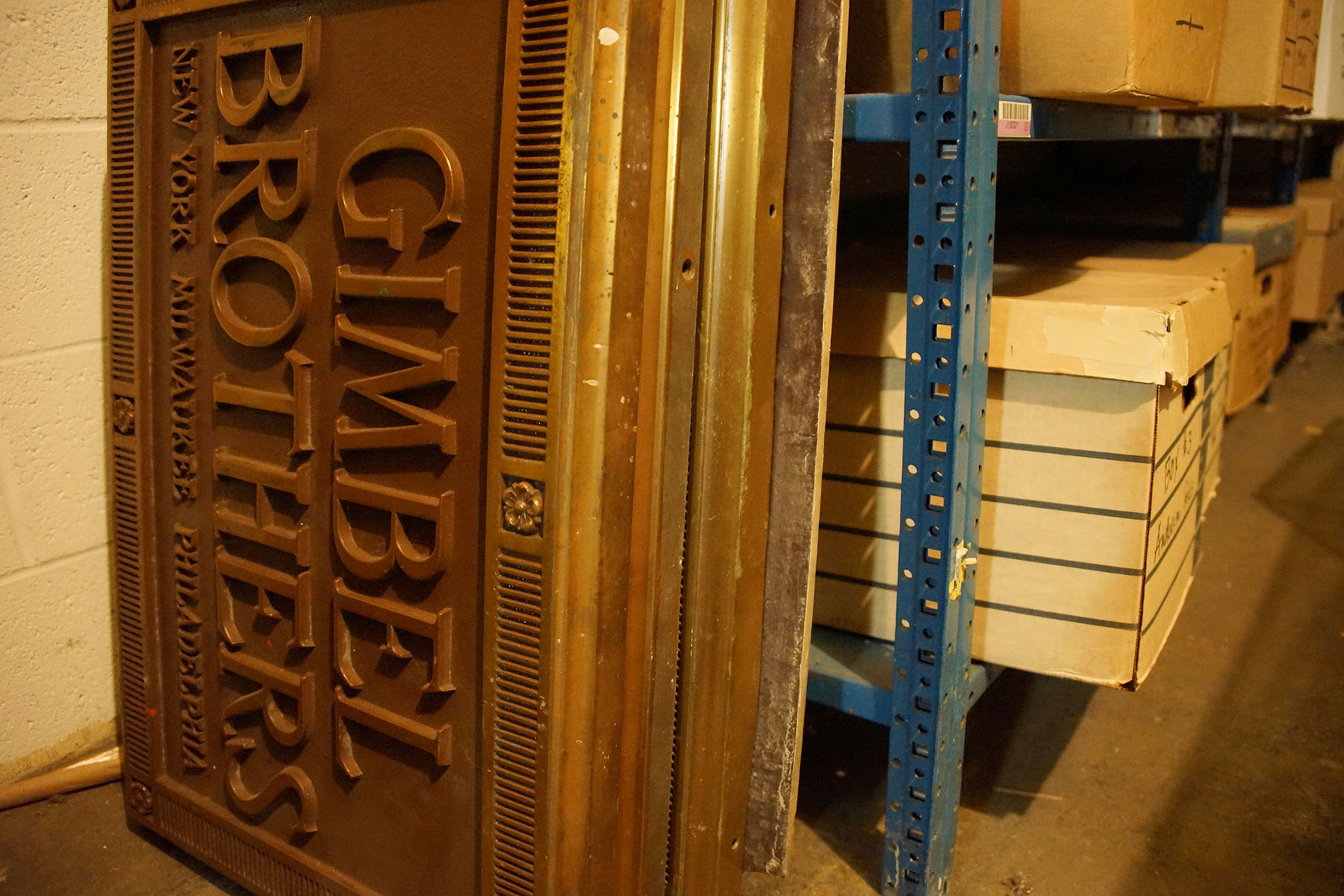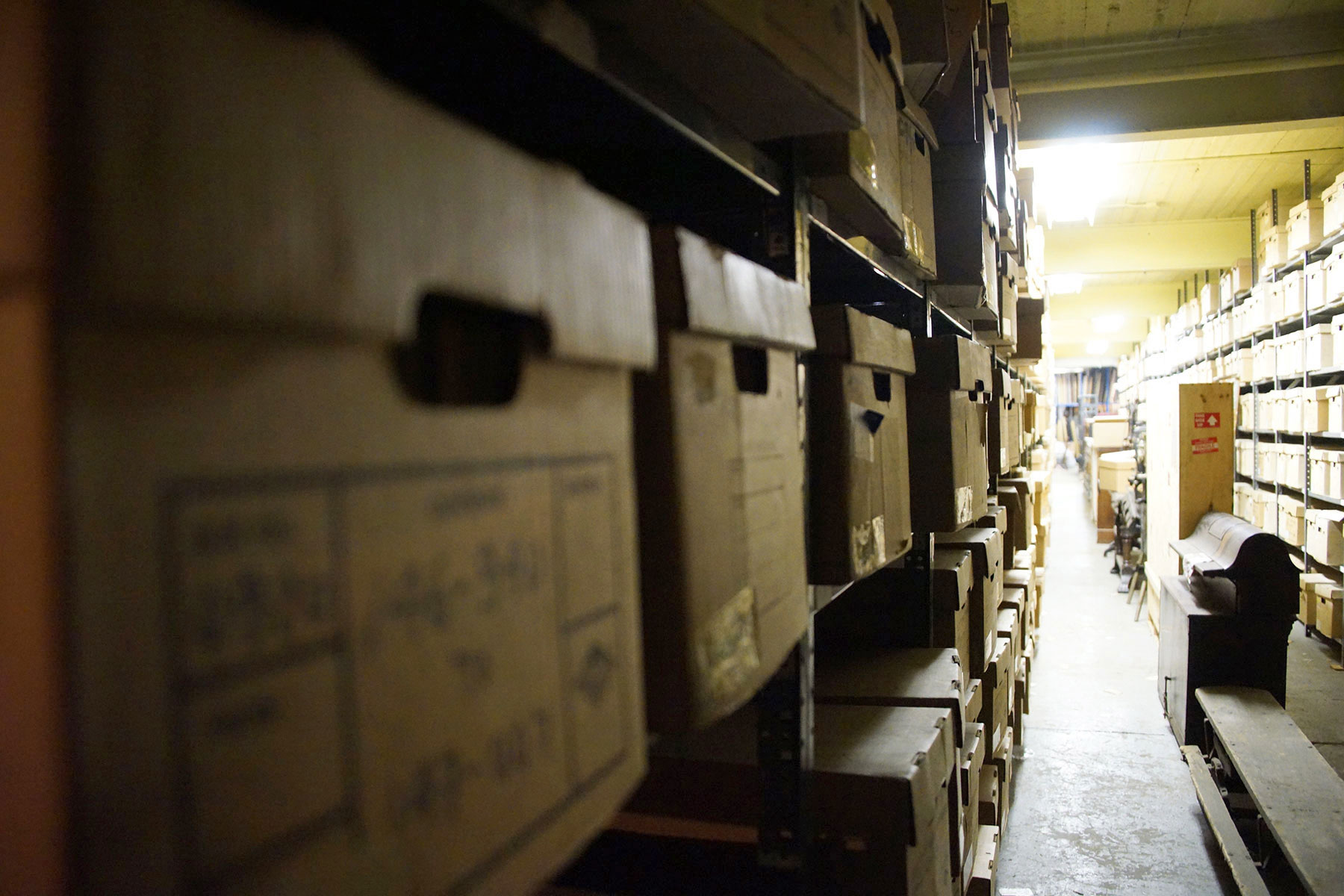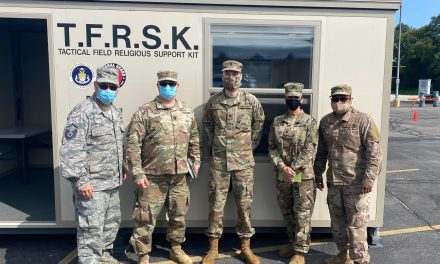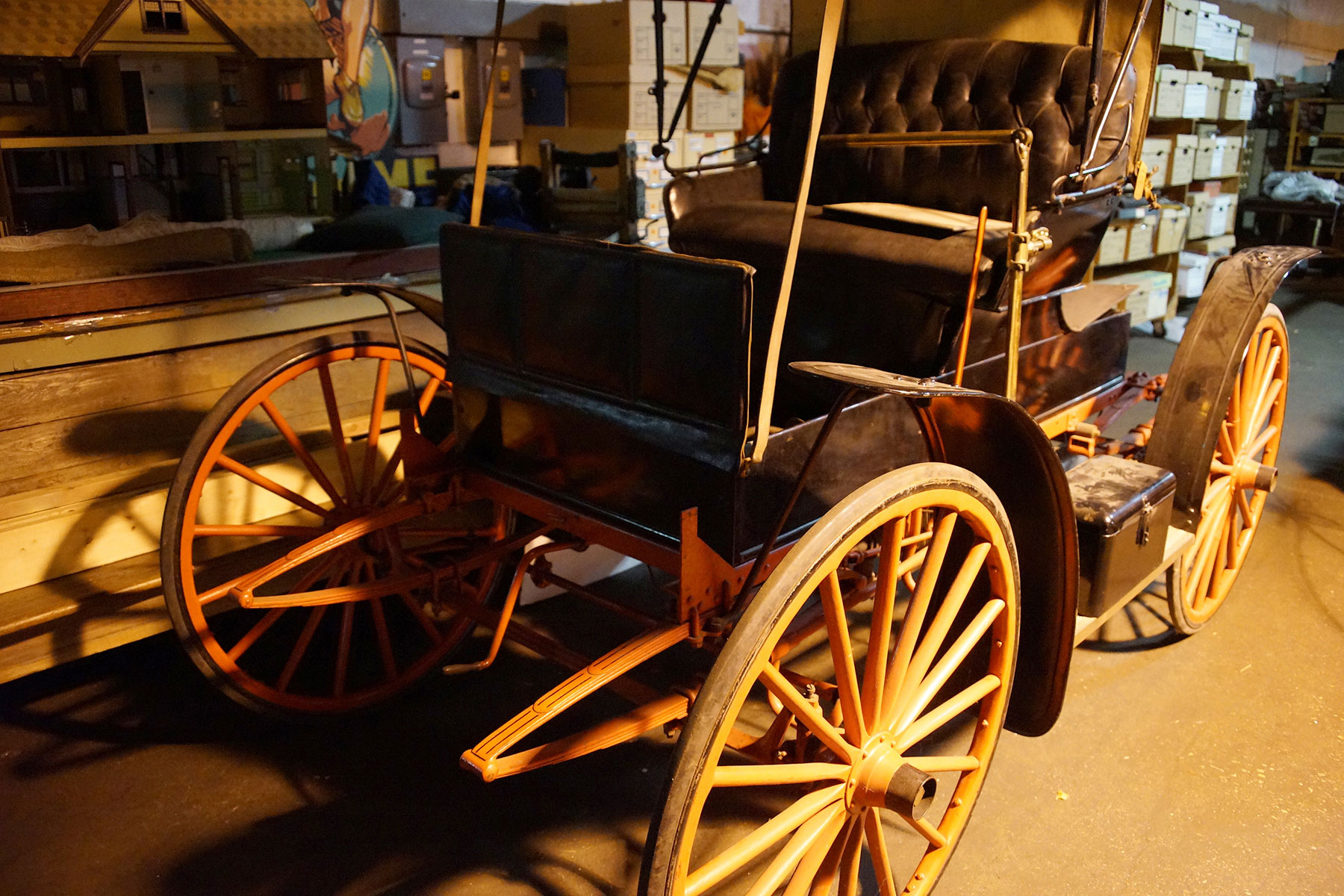
Similar to the warehouse scene at the end of Raiders of the Lost Ark, the Milwaukee Historical Society has a vast storage site for more than one million of its documents and rare artifacts.
Preserved at an undisclosed location within Milwaukee is a facility that holds more than one million documents and photos, and 60,000 rare artifacts for the Milwaukee County Historical Society (MCHS). The items span 170 years of local memories going back to the earliest Settlement era. While there is no Ark of the Covenant like in an Indiana Jones movie, the MCHS warehouse contains the bulk of the nonprofit’s vast collection.
“The warehouse is where we store artifacts off-site, because we simply don’t have the space downtown to be able to display everything,” said Mame Croze McCully, Executive Director. “Some things are just so large and heavy that they don’t fit through our doors.”
One of these behemoths is an Intertype machine. In the days before computers and laser printers, newspapers set their text using a typecasting machine. Resembling the well known Linotype machines, basically a giant typewriter that produces metal letters, Intertype was used by the Milwaukee Journal for many years. The last Intertype model was manufactured in 1970, and within a decade the newspaper industry had nearly phased out brass type and castings to be replaced by film negatives and photographic paper, still a generation before the digital revolution.
“The Milwaukee Journal used this Intertype machine up until 1980,” said Ben Barbera, Associate Curator. “After it was donated to the Historical Society it went on display at the Waukesha County Technical College for the next twenty years. Eventually they needed to reclaim the space and returned it to us.”
The typesetting machine weighs several thousand pounds and still works. They have become more popular in recent years as people rediscover the old print methods and try to actually use them for letterpresses.
Among the boxes of documents, scrapbooks, furniture, portrait paintings, and relics are many other oversized treasures, along with a municipal sculpture that once adorned the old courthouse building. Constructed in 1873 at the modern-day site of Cathedral Square, the elaborate statue was modeled on the historical coat of arms, which later evolved into the Great Seal of the State of Wisconsin. It was saved in 1931 before the courthouse was demolished.
The stockpile of historic papers contain complete volumes from the Milwaukee Daily Sentinel and Gazette newspapers, first published in 1845. The Milwaukee Sentinel passed through a string of owners, and was eventually purchased by Rufus King in 1845. He united it with the Milwaukee Gazette in 1848.
“We even keep old tax records because they were all handwritten,” said McCully. “They are literally works of art from the early days of Milwaukee.”
The location of the secure warehouse is kept secret as a precaution, and access is restricted. The Milwaukee Independent was the first news organization granted permission to take photos on site, and publish select images for the public.
Vintage vehicles stored at the facility include a beer wagon, a Milwaukee Fire Department Hose Cart, and two early motorcars, the Smith Flyer and Sears Motor Buggy.
The Smith Flyer was first manufactured by Milwaukee’s A.O. Smith Company from 1915. It was sold a short time later in 1919 to Briggs & Stratton and renamed. The small, lightweight vehicle was made with a wooden frame and resembles a sled with wheels.
Lincoln Motor Car Works produced cars for Sears Roebuck from 1908 until 1912. MCHS has one of four models known to exist in the world, kept in pristine condition with the ability to still run after 107 years. Built in 1909, the Sears Motor Buggy drove at a blinding speed of up to 25 miles per hour, with the advertising claim that it was so safe a child could drive it. It only cost $395, or about $11,000 in today’s dollars. MCHS has not displayed the vehicle publicly in a decade, but hopes to feature it a future downtown Milwaukee parade.
Personal relics and antique machines of all size and style compete for room at the warehouse and take up every available spot, like an early electronic calculator that was the size of a washing machine, or a Thomas A. Edison brand Amberola Phonograph.
A few of the other items found on the seemingly endless rows of shelving were:
A silver chalice found in the ashes of the Welsh Tabernacle after the great Third Ward Fire of 1892, which stood on Jefferson Street between Michigan and what is now Clybourn Street.
An event statue of Metik the Eskimo, who was Billie the Brownie’s sidekick and accompanied him on advertisements and Milwaukee radio programs for Schuster stores.
And a 1932 Gothic cathedral carved over four years by Milwaukee native Conrad J. Amrhein. The massive 3/16 wooden model includes 78 statues of the saints and 500 spires.
Some items in the inventory exist in a tentative state, too problematic to repair but not damaged enough to discard.
“In many cases we were given things in very bad condition,” said McCully. “So at times it can make the Historical Society look like we are poor stewards, when in fact that was the way we received the item.”
The Milwaukee County Historical Society was founded in 1935 to preserve, collect, and make available materials related to the history of the Milwaukee community. Through a range of activities, MCHS works to recognize and preserve the local heritage. MCHS houses the Harry H. Anderson Research Library and a museum. The library collects and preserves manuscripts, records, photographs, and family history information. The museum preserves three-dimensional artifacts related to Milwaukee County history, such paintings, uniforms, flags, furniture, personal items.
Read the article and view the photo essay that were produced as companion features for this news report.

